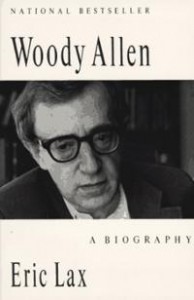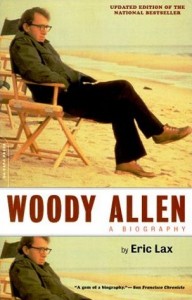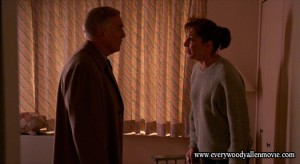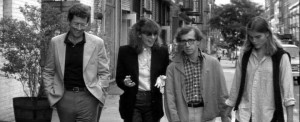From New York Newsday (Sunday, August 28, 1991). -– J.R.
WOODY ALLEN: A Biography, by Eric Lax. Knopf, 384 pp., $24.
BY JONATHAN ROSENBAUM
How does one write the biography of an untouchable? Without touching him –- or at least by handling him with kid gloves. When it comes to dealing with America’s favorite comic spokesman for the urban middle class, Eric Lax does a fair job of plotting out both the apprenticeship and the career moves of Woody AIlen as he gradually worked his way up from gag writer to stand-up comedian to increasingly ambitious filmmaker (from “Bananas” to”Hannah and Her Sisters” to “Another Woman”), with various side trips –- as jazz clarinetist, playwright and literary humorist — along the way. But when it comes to separating the Woody persona from the actual person, or the mystique from the life, Lax’s agenda goes soft. Devoted fans may discover a few unmined nuggets here, but for skeptics like myself the experience is as unreflective as any of Allen’s movies.
 After an introduction that briefly chronicles Allen’s tortured
After an introduction that briefly chronicles Allen’s tortured
23-hour trip to the Soviet Union in 1988, Lax begins with the
birth of Allan Stewart Konigsberg in 1935 and the creation of
his familiar stage name 16 years later. For roughly the next
200 pages, Lax proceeds chronologically through Allen’s early
career. By the time he reaches the films, his interest in the
current Woody Allen has so overtaken any sense of
development that the book’s second half turns into free-form
hagiography, with references to the past -– some of dubious
significance -– dropped in to illustrate more general remarks
about the man. We learn, for instance, that one day in 1966
“Woody ordered scrambled eggs and bacon” at Lindy’s, and
when the waitress served him eggs sunnyside up and ham
instead, he “ate them rather than complain”.
It’s interesting to learn that Allen made a political satire for PBS in 1971 that never aired after he refused to make a few cuts. But curiously and perhaps significantly, there is no mention of Allen’s courageous Op-Ed piece in The New York Times criticizing the level of force used by Israel in responding to Palestinian resistance, one of the few occasions (apart from “Stardust Memories”) when he has dared to challenge the cherished biases of his constituency. The Woody we know is the Woody Lax wants, shorn of complications; once again we’re repeatedly told that the man has a low opinion of himself, and once again we aren’t seriously called upon to ponder why.
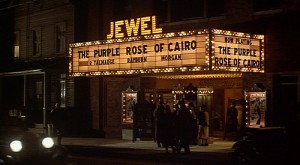 Generally content to annotate the self-evident, Lax tends to
Generally content to annotate the self-evident, Lax tends to
trot out the usual credentials — citations of awards and honors
— whenever he has to establish such ambiguous qualities as
artistry and intelligence. Having followed his subject around
for three years, he seems so caught up in the minutiae of his
hero’s workaholic existence that he can’t step back for a larger,
analytical picture –- including any viable explanation for Allen’s
special appeal. (While his box office hits are few, he clearly
remains a sacred cow among many upscale urban audiences.)
An author’s note explains that “Our agreement was simple: “I would check facts with [Allen] but he would have no control over or approval of the text. He cooperated in this but did not authorize it; to have done so would have made this his book, not mine.” How, one wonders, could a man with such a highly developed sense of both privacy and his own image have agreed to such an arrangement? No need to ask. Lax has internalized so much of Allen’s own self-censorship that he systematically shies away from exploring those troubling areas that a more searching biographer might investigate: the contradiction between apparent introversion and his extroversion as a thinker and performer, the implicit labeling of all his major characters as either winners or losers (which seems closely tied in his mind to the differences between Manhattan and his native Brooklyn -– a subject on which Lax is more forthcoming), the reasons why any of his previous marriages or relationships didn’t work out, or why he wants to make Bergman and Fellini movies rather than his own.
On the latter question, Lax is at least helpful about the specific ways in which Allen learned to copy his models, and in many respects this proves to be the most interesting material in the book: “Among Woody Allen’s many talents is his ability to incorporate mimicry with creativity,” he writes, and then goes on to summarize his examples of the former: “He learned the cadences of Bob Hope, the language of S.J. Perelman, the style of George Lewis, the outlook of Mort Sahl, the obsessions of Ingmar Bergman, the zaniness of the Marx Brothers, the soulfulness of Buster Keaton, the existential dilemma of Jean-Paul Sartre, the exaggerated exoticness of Federico Fellini, along with a score of additional influences, and (as they had built on others) he mixed their essences with his own to produce a unique sensibility.”
Leaving aside the question of how –- or why – one goes about mimicking an outlook, an obsession, or an existential dilemma, Lax’s parenthetical “as they had built on others” seems rather too easy a simile. Offering no evidence that any of Allen’s models is even remotely as imitative as Allen is, he fails to show how his subject’s studied mimicry amounts of anything more than a stylistic skin graft –- the sort of superficial imitation that Allen’s character Zelig compulsively carries out in the film of that title.
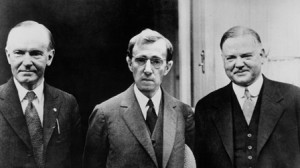 It’s certainly true that Allen has moved beyond a few of his models; I think one could argue that his considerable gifts as a comic writer “build on” S.J. Perelman rather than reduce or simply recycle him. But it’s more questionable whether his appropriations of the camera styles (and often cameramen) pf Bergman and Fellini, the real-life witnesses from “Reds” in “Zelig” and George Lewis’s intonation in his own clarinet playing add anything to his own contributions other than a certain form of window dressing. Preoccupied with “quality goods” – cultural touchstones with visible price tags – Allen aims for surface impressions, so it’s no surprise that an admiring biographer would tend to follow suit.
It’s certainly true that Allen has moved beyond a few of his models; I think one could argue that his considerable gifts as a comic writer “build on” S.J. Perelman rather than reduce or simply recycle him. But it’s more questionable whether his appropriations of the camera styles (and often cameramen) pf Bergman and Fellini, the real-life witnesses from “Reds” in “Zelig” and George Lewis’s intonation in his own clarinet playing add anything to his own contributions other than a certain form of window dressing. Preoccupied with “quality goods” – cultural touchstones with visible price tags – Allen aims for surface impressions, so it’s no surprise that an admiring biographer would tend to follow suit.
When Lax goes on to argue that “there is no such thing as a Woody Allen film in terms of easy categorization,” he overlooks this trait and many others that makes an Allen movie very recognizable indeed. For me, at least, these include several interrelated syndromes: New York provincialism, self-hatred, an uneasiness of many characters with their vulgar and/or Jewish working-class roots, an almost total exclusion of non-whites from a dream vision of Manhattan, a taste for style over form and axiom over analysis.
Admittedly this is a biased list; I’m sure that many Allen fans could come up with just as many benign constants. The point is that Lax simply ignores the consistency and focuses on the variable high-gloss surfaces, arguing that “If one were to see for the first time and without credits ‘Interiors,’ ‘Manhattan,’ ‘The Purple Rose of Cairo,’ and ‘Crimes and Misdemeanors’…they would recognize the actors in two of them but likely never suspect they were all made by the same person.” Insofar as the unity eludes him, he somehow misses the man as well.

